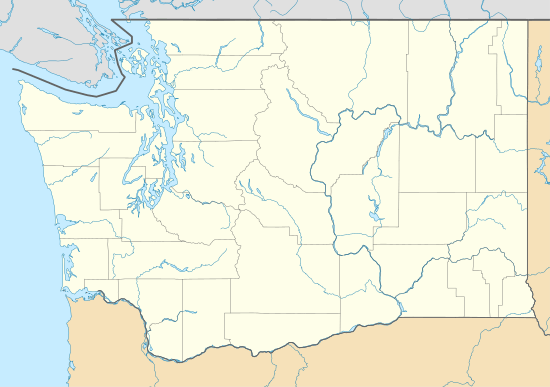William and Estella Adair Farm
The William and Estella Adair Farm, named the Broadacre Farm in 1922, is a 115-acre dairy farm in Carnation, Washington that illustrates the evolution of a typical dairy farming operation in the Snoqualmie Valley. Established in 1910, it was added to the National Register of Historic Places in 2002.[2]
Adair, William and Estella, Farm | |
 Adair Farm | |
 | |
| Location | 27929 NE 100th St., Carnation, Washington |
|---|---|
| Coordinates | 47°41′05″N 121°57′50″W |
| Area | 115 acres (47 ha) |
| Built | 1910 |
| Architectural style | Bungalow/craftsman |
| MPS | Dairy Farm Properties of Snoqualmie River Valley, Washington MPS |
| NRHP reference No. | 02000249[1] |
| Added to NRHP | March 22, 2002 |
History
The farm was established in 1910 on the west bank of the Snoqualmie River. Structures on the property include a Craftsman bungalow residence, a hay barn, milk house, milking parlor, woodshed, and other outbuildings.
The residence, built in 1915, is a 1 1⁄2-story wood-frame bungalow with a side gable.[2] The hay barn, added in 1922, is notable as the earliest extant example in the Snoqualmie Valley of the use of the bow truss or Gothic arch for the roof.[3]
One of the first milking parlors in the county was installed at Broadacre Farm in about 1950.[4] The milking parlor and milk house are part of a complex of four adjoining buildings. The complex, with additions made through the 1990s, is integrated with the hay barn.[2]
The Adairs sold the Broadacre Farm to Peter Sinnema in 1945. Sinnema expanded the existing farm complex by constructing loafing sheds on either side of the bam, adding a new tank house, and building a new Surge six-in-a-line milking parlor, one of first to be installed in the valley. Later additions include large detached loafing sheds, a new herringbone milking parlor designed for 16 cows, and a modem milk house with a 22,000 gallon tank. [2]
For many years, Broadacre Farm was the site for the annual Snoqualmie Valley Pioneer Picnic, which the Adair family first hosted in 1923.[3] Broadacre Farm was a working dairy farm until the mid-1990s.[2]
References
- "National Register Information System". National Register of Historic Places. National Park Service. November 2, 2013.
- Florence Lentz (September 2000). National Register of Historic Places Inventory/Nomination: Adair, William and Estella, Farm. National Park Service. Retrieved February 16, 2019. With ten accompanying pictures taken in 2000
- "DAIRY FARM PROPERTIES OF THE SNOQUALMIE VALLEY". King County Landmarks and Heritage Commission.
- "HISTORIC AGRICULTURAL RESOURCES SURVEY & INVENTORY" (PDF). Washington State Department of Archaeology and Historic Preservation.